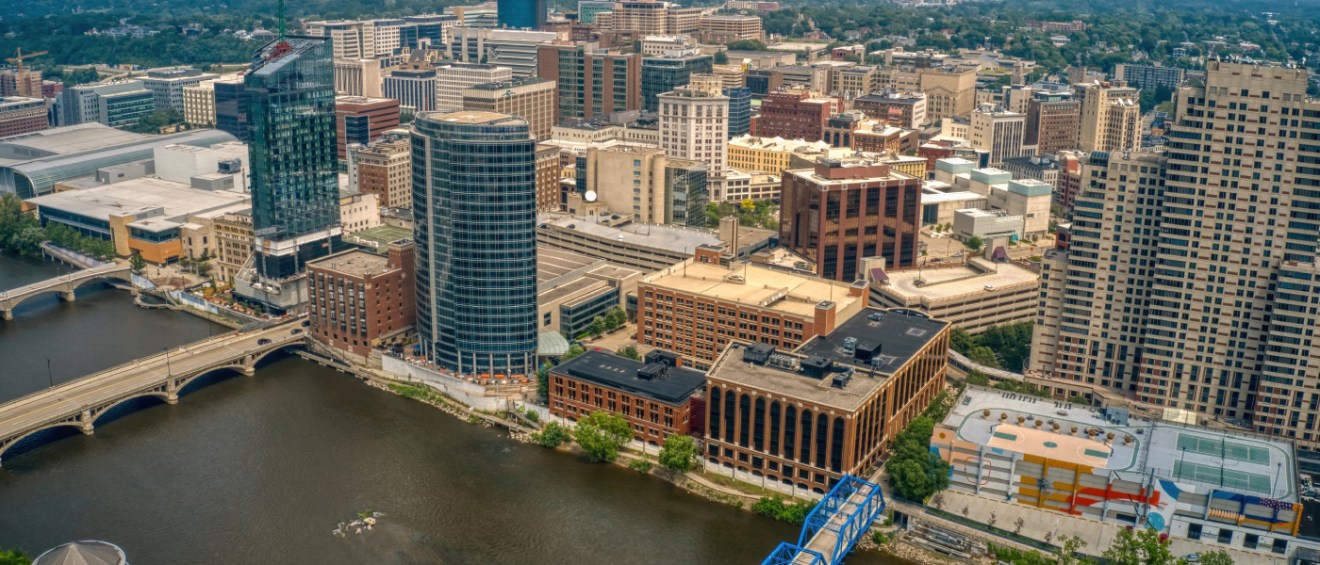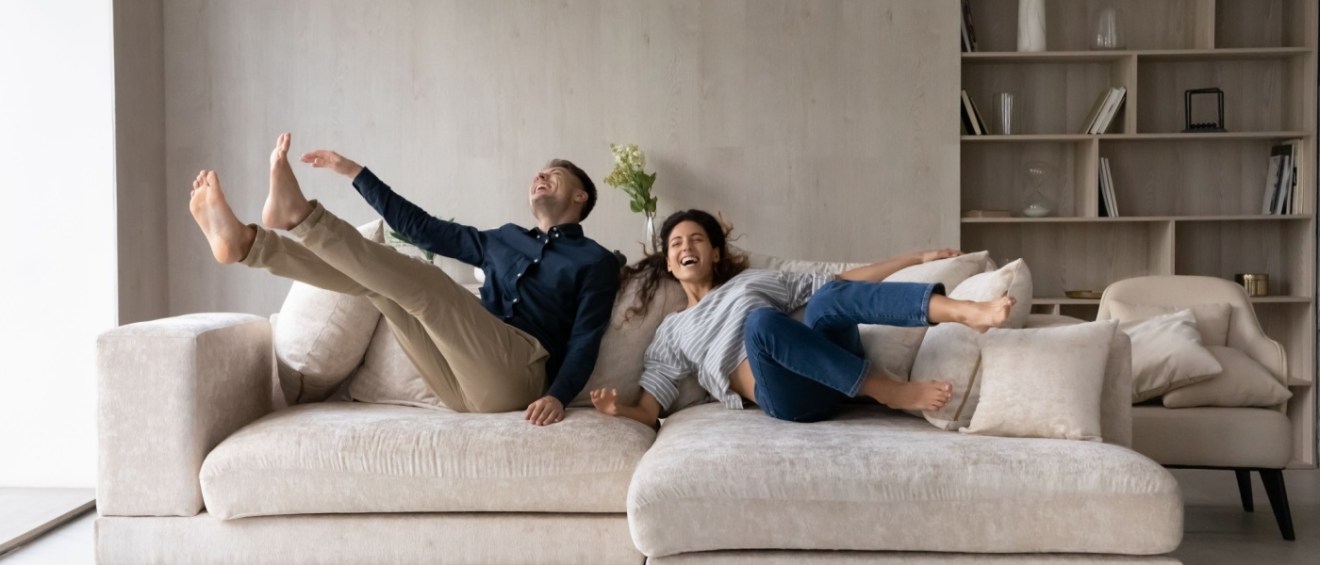The Mental & Physical Health Benefits and Shortcomings of Moving to a Smaller Metro [Expert Interview]
Share this article:
The latest RentCafe year-end report on the evolution of the rental market in 2021 revealed that renters are increasingly flocking to smaller, less crowded metros, where they have better access to outdoor amenities and nature. As we are dealing with the pandemic’s effects on our health, it was important to consider whether this trend favoring smaller metros is motivated, at least in part, by a need to be mindful and protect both our mental and physical health.
To this end, we asked professors and experts to talk to us about the benefits and the shortcomings of renting in a smaller metro. In their answers, they covered access to nature and the increase in physical activity—as some of the benefits of smaller metros—as well as some downsides, and the pandemic’s impact on people’s choice of housing location.
What do you think is the main impact of living in a smaller metro—within proximity of nature—on a person’s mental & physical health?
- Marc A. Adams, Associate Professor, College of Health Solutions and Program Director for the PhD in Population Health
“Since the pandemic, the confluence of physical distancing, a diverging economy for homeowners versus renters, and the decoupling of work and worksite have reshaped our perspectives on home and health. For example, rural “Zoom Towns” have emerged, described as small communities near nature, where remote workers can leverage disposable income and take advantage of a higher quality of life. Small metros may represent the “goldilocks region” between highly populated cities and rural Zoom Towns, with small metros having access to affordable housing, activity-friendly amenities, and better access to nature. As a result, people may increasingly find mental and physical health benefits in less populated areas that have reduced economic burdens, more space, and physically active lifestyles.”
- Meg A. Warren, Ph.D., Associate Professor of Management at Western Washington University
“We know from a wealth of research that living close to nature significantly boosts our mental and physical health. The mere presence of nature around us can be impactful, and opportunities for certain kinds of nature experiences are decreasing over time with urbanization, such that younger generations have less frequent and less varied nature exposure. Further, recent research shows that going beyond exposure, a larger impact comes through engaging in simple activities in nature, whether it is relaxing in a garden, watching birds, taking pictures of natural views, or noticing new blooms. This suggests that having the space to plant a backyard garden or having access to nature trails where you can take regular walks — perks that can come with living in a smaller metro — can be impactful for people’s health and wellbeing.”
What are the downsides of living in a small/mid-sized market and how does that affect a person choosing between large and small cities?
- Marc A. Adams
“Life events, such as having a child or retiring, often precipitate a change in lifestyle and place to live. At the moment, for many people, the upside of living in small/mid-sized markets outweighs the downside. Given current trends, people may want to anticipate what life may look like in their desired area in 5-10 years. A 2020 study warned that the pressures of explosive population growth in small towns and cities would likely result in challenges similar to big cities, including housing affordability, traffic congestion, cost of living, overpopulated schools, inadequate infrastructure, and employment concerns.”
- Meg A. Warren
“Living in a smaller metro is not for everyone. Living close to nature carries its set of drawbacks for health due to allergies, wildlife attacks, and wildfires, among others. Our research also shows that feeling like you live in a supportive and safe community are important factors for one’s wellbeing. For those who do not have extended family and friends in smaller metros, moving to such an environment may be less desirable. Smaller cities that lack diversity may be particularly challenging to live in for people from socially marginalized groups such as people of color, LGBTQ+ individuals, people from minority religious backgrounds, etc. Having access to opportunities for jobs, career growth, higher education, human services, and cultural advancement may also be a concern in smaller markets.”
Has the pandemic influenced the way people reflect on the impact of their living environment on their mental health?
- Marc A. Adams
“The pandemic stress on mental health has likely been related to fear and anxiety of job loss, rising costs, childcare, educational disruptions, social isolation, and infection. These fears and anxieties can have a deleterious effect on one’s immune response, thereby lowering one’s ability to fight infections and well as manage chronic disease. Regular physical activity and contact with nature are related to lower stress, anxiety, depression, and enhanced psychological restoration. People may weigh how smaller communities can help alleviate these stresses and restore their mental health during this period.”
- Meg A. Warren
“The pandemic has created a variety of stresses as well as opportunities that have given people more perspective on their living environment. Two important contributors to mental health are family relationships and satisfaction with work, both of which have been affected by the pandemic and people’s living environment. The research shows that although being confined to the residence more or raising children in tight quarters can be stressful for families, spending time together at home engaging in fun activities can bring a family closer. Having a house with adequate square footage that allows family members the space to be alone when needed as well as connect over shared activities together can be supportive in strengthening family relationships. The pandemic has also revealed to some people that they enjoy working remotely from home or taking classes remotely if they have the space to do so with minimal distractions. A living environment that has quiet spaces can make a meaningful difference for such people in their ability to enjoy work and education.”
Has the pandemic influenced the way people reflect on the impact of their living environment on their physical health?
- Marc A. Adams
“Our zip code often influences our health more than our genetic code because the environment shapes our health behaviors. Multiple studies suggest that the COVID-19 pandemic has exacerbated the ongoing pandemics of obesity and physical inactivity. Physical activity is part of a healthy lifestyle and, therefore, a healthy population who is more resilient to mental health issues, chronic diseases such as cancer, diabetes, and cardiovascular disease, as well as infectious diseases and severe COVID-19 outcomes.”
Share this article:
Mihaela Buzec is a senior writer, researcher, and online content developer for RentCafe, where she has over 7 years of experience writing about the real estate industry. She authors important resources such as the statistics pages describing generational patterns and renter's guides that help renters in their journey. Her work has appeared in publications such as Apartment Therapy, Indy Star, and Investopedia.
Mihaela is a published researcher and activates within academia as well. She holds a BA in English and German Language and Literature, an MA in Current Linguistics, and a PhD in neurolinguistics.
The Ready Renter has your back
Tips, news, and research curated for renters, straight to your inbox.




Related posts
Subscribe to
The Ready Renter newsletter







